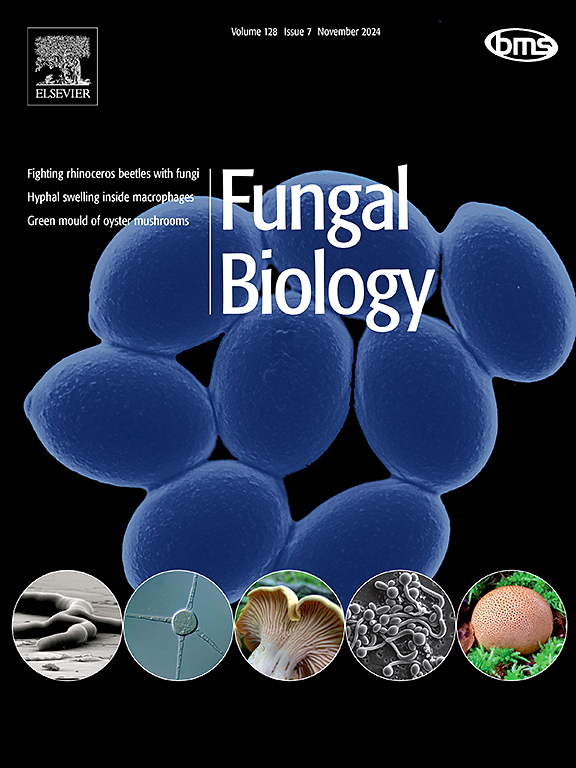Black-carrot drink şalgam as a habitat for spoilage yeasts
IF 2.9
3区 生物学
Q2 MYCOLOGY
引用次数: 0
Abstract
Şalgam is a traditional drink produced via the lactic-acid fermentation of vegetables (black carrot and turnip), sourdough, and bulgur flour; with rock salt also added. During storage, an additional yeast-mediated fermentation can occur, causing changes in organoleptic properties, as evidenced by the microbe-mediated release of gases. Here, we characterise şalgam as a microbial habitat, identify the yeasts that cause spoilage, and characterise yeast-induced changes of the şalgam. The total acidity of the spoiled şalgam, in terms of lactic acid, ranged from 5.33 to 8.36 g/L with pH values from 3.86 to 4.10. Nine different spoilage fungi were isolated and then identified using molecular techniques (combination of PCR-RFLP of the 5.8 S-rRNA region and sequencing of the D1/D2 domain of the 26 S-rRNA gene). The highest frequencies of species were for the (apparently dominant) Saccharomyces cerevisiae, Galactomyces candidum, and Pichia kudriavzevii. Notably, two of these yeasts—P. kudriavzevii and Saccharomyces cerevisiae—are known to be acid-tolerant, have a robust stress biology, and can dominate various microbial habitats including those of fermented foods and drinks. Şalgam is a nutrient-rich, high-water-activity habitat that can favour the growth of various microbes and becomes less acidic (so more ecologically open) after the proliferation of yeasts.
作为腐败酵母栖息地的黑胡萝卜饮料şalgam
萨尔格姆是由蔬菜(黑胡萝卜和萝卜)、酸面团和粗面粉经乳酸发酵制成的传统饮料,其中还添加了岩盐。在贮藏过程中,可能会发生由酵母介导的额外发酵,导致感官特性发生变化,微生物介导的气体释放就是证明。在这里,我们描述了作为微生物栖息地的şalgam的特征,确定了导致腐败的酵母菌,并描述了酵母菌引起的şalgam变化的特征。以乳酸计,变质的şalgam 的总酸度为 5.33 至 8.36 克/升,pH 值为 3.86 至 4.10。通过分子技术(结合 5.8 S-rRNA 区域的 PCR-RFLP 和 26 S-rRNA 基因 D1/D2 域的测序),分离并鉴定了九种不同的腐败真菌。物种频率最高的是(明显占优势的)酿酒酵母(Saccharomyces cerevisiae)、半乳酵母(Galactomyces candidum)和皮奇亚酵母(Pichia kudriavzevii)。值得注意的是,其中两种酵母--P. kudriavzevii 和酿酒酵母--是已知的耐酸酵母,具有强大的应激生物学特性,可以主宰各种微生物栖息地,包括发酵食品和饮料的栖息地。汞齐是一种营养丰富、水活性高的栖息地,有利于各种微生物的生长,在酵母菌大量繁殖后,酸性会降低(因此生态环境更加开放)。
本文章由计算机程序翻译,如有差异,请以英文原文为准。
求助全文
约1分钟内获得全文
求助全文
来源期刊

Fungal biology
MYCOLOGY-
CiteScore
5.80
自引率
4.00%
发文量
80
审稿时长
49 days
期刊介绍:
Fungal Biology publishes original contributions in all fields of basic and applied research involving fungi and fungus-like organisms (including oomycetes and slime moulds). Areas of investigation include biodeterioration, biotechnology, cell and developmental biology, ecology, evolution, genetics, geomycology, medical mycology, mutualistic interactions (including lichens and mycorrhizas), physiology, plant pathology, secondary metabolites, and taxonomy and systematics. Submissions on experimental methods are also welcomed. Priority is given to contributions likely to be of interest to a wide international audience.
 求助内容:
求助内容: 应助结果提醒方式:
应助结果提醒方式:


